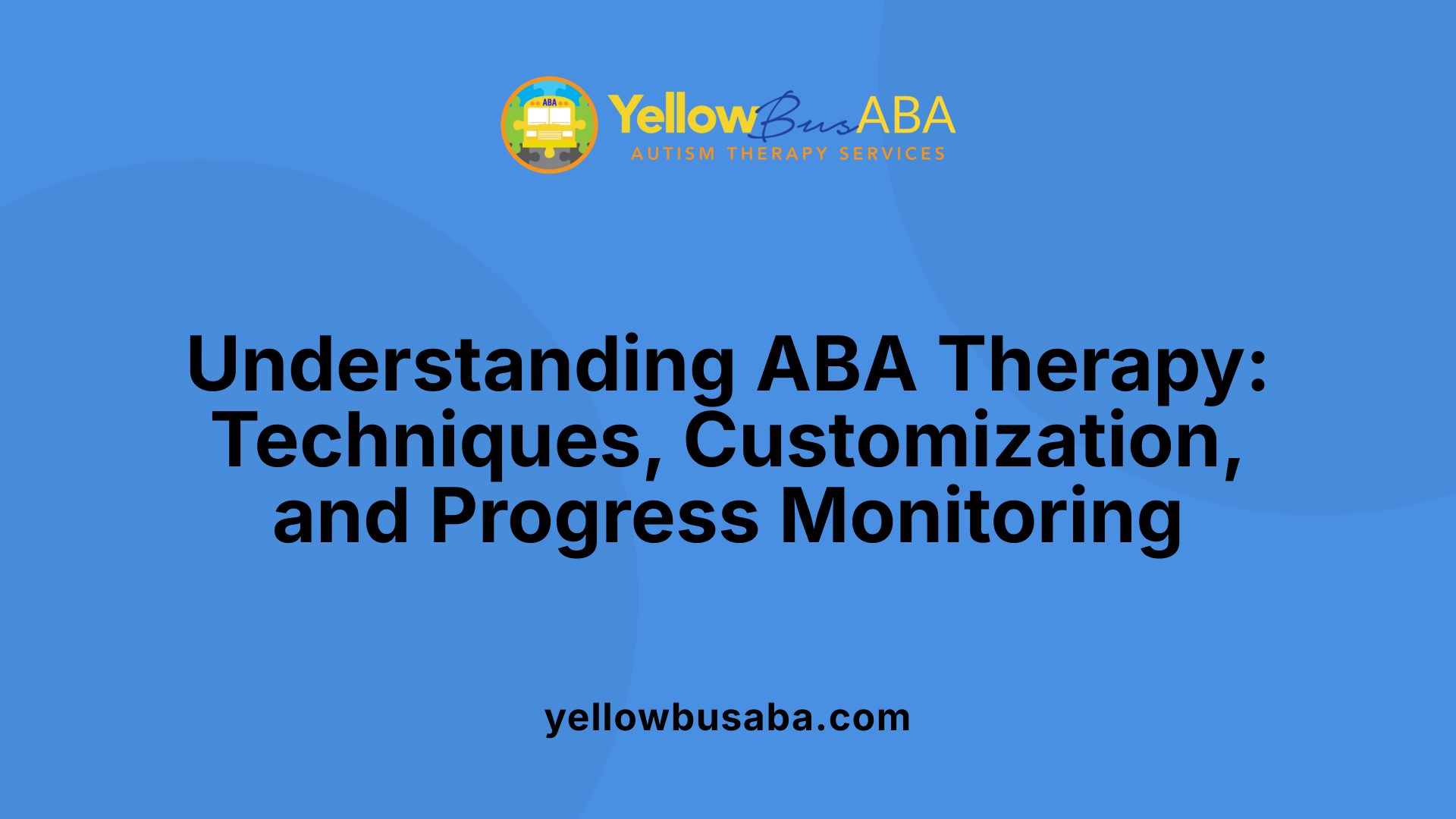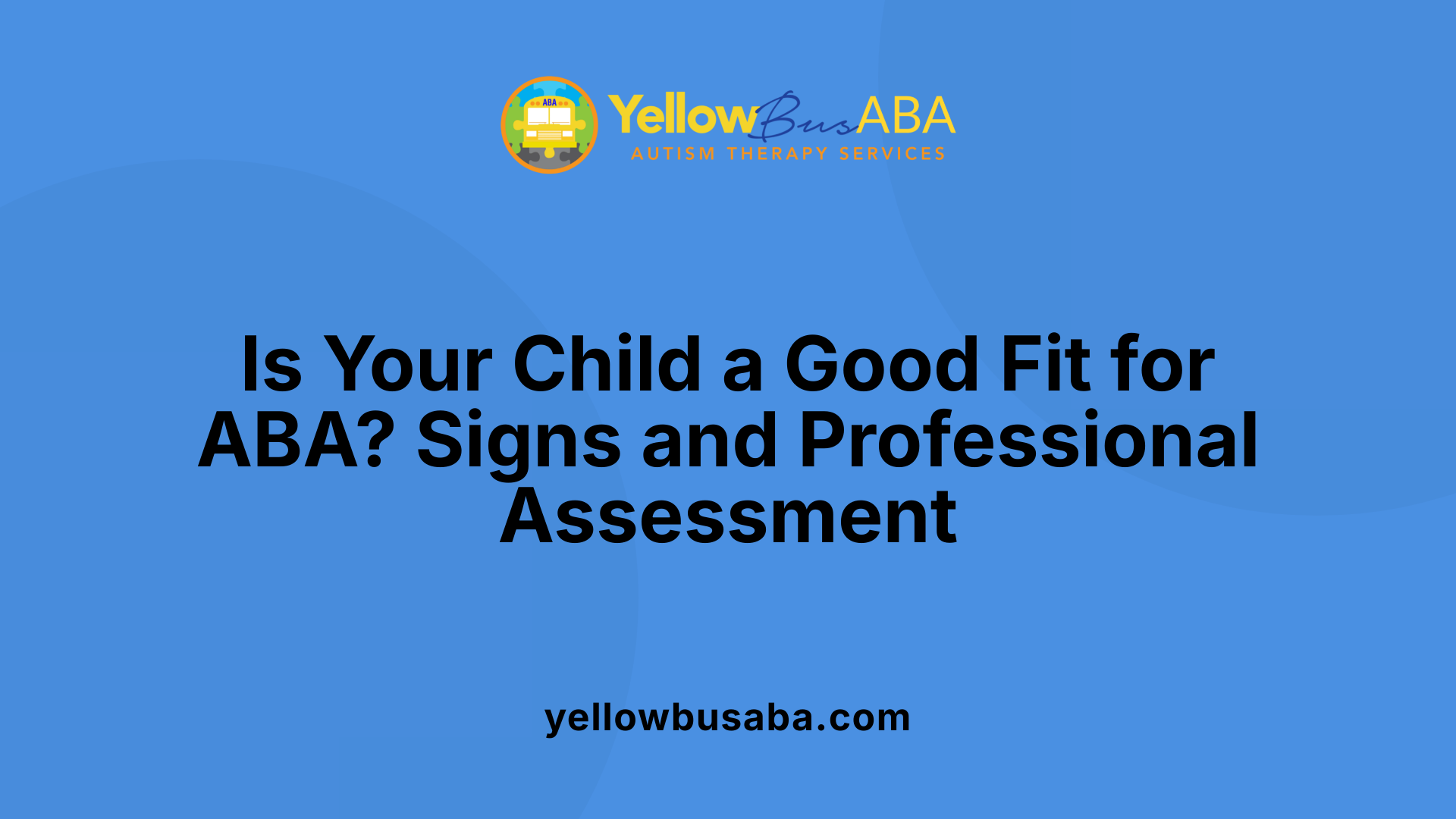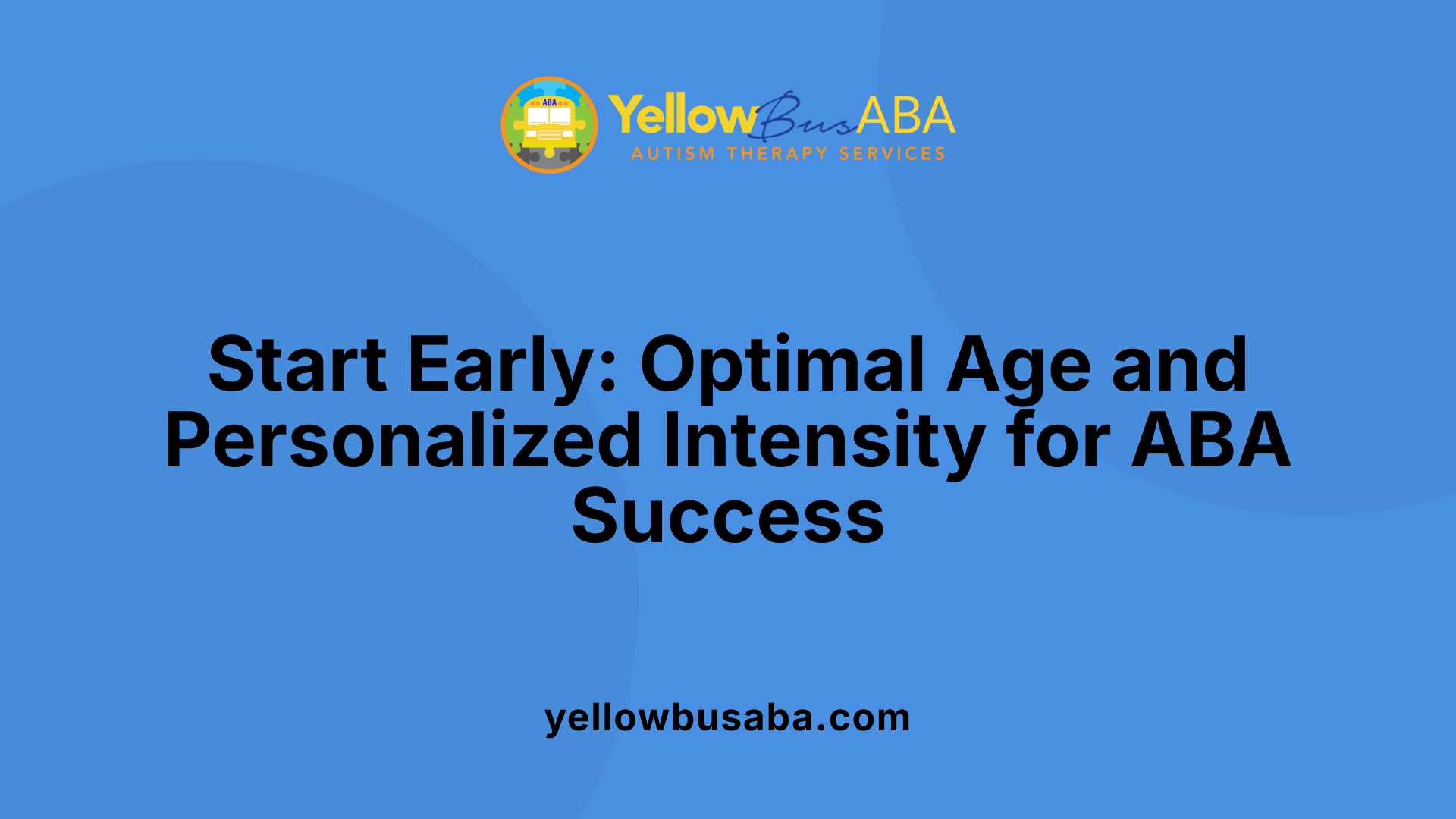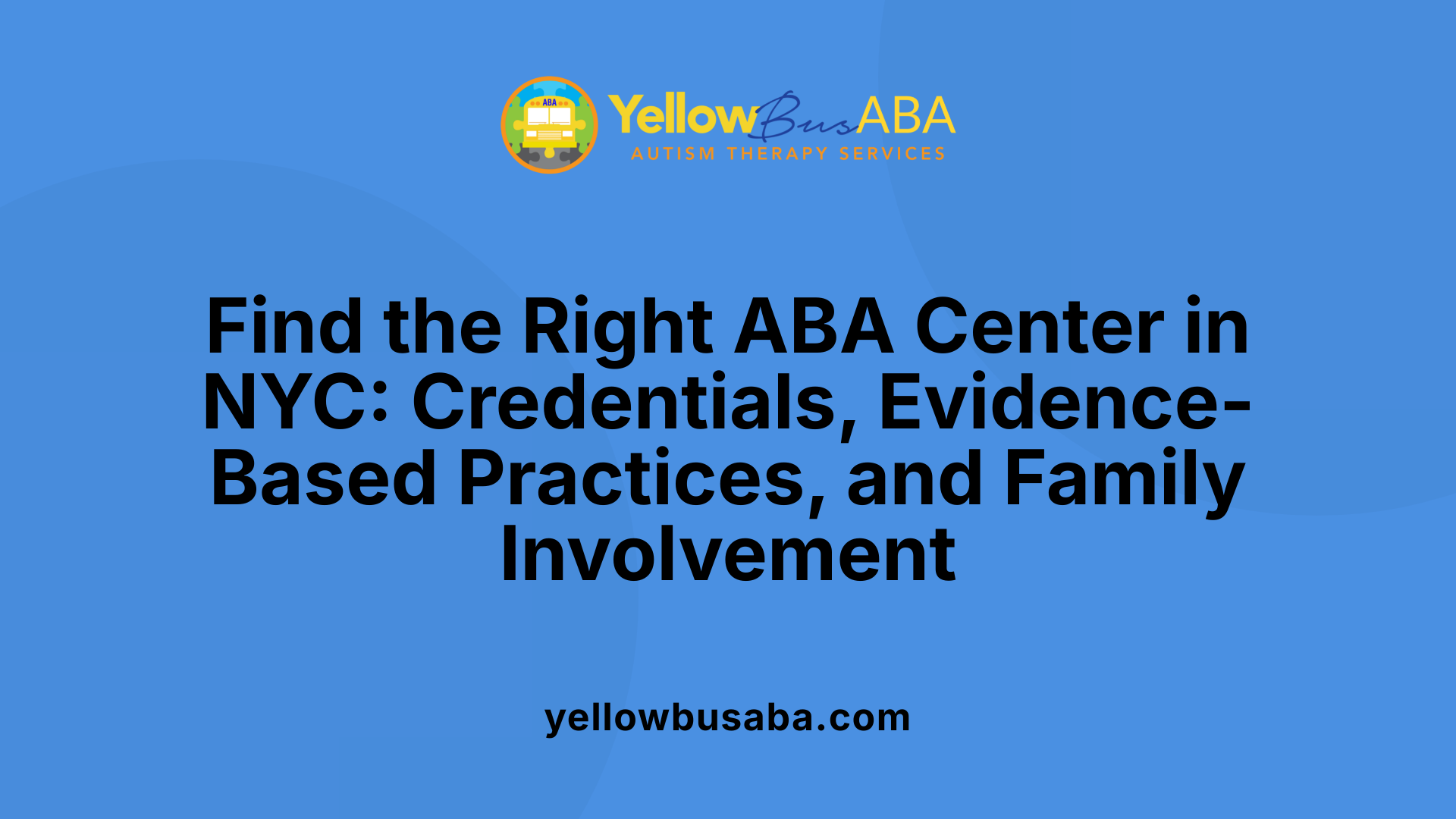Understanding ABA Therapy and Its Role in Autism Support
Finding the right ABA therapy center in New York can feel overwhelming, especially with so many providers and options available. To make an informed decision, it's essential to understand what ABA therapy is, how it works, and what factors to consider when choosing a provider. This article explores the fundamentals of ABA, its benefits, and practical advice for selecting a program tailored to your child's needs.
What is ABA Therapy and How Does It Work for Children with Autism?

What is ABA therapy and how does it work for children with autism?
ABA therapy, or Applied Behavior Analysis, is a scientifically backed method that focuses on understanding how behavior functions and how it is influenced by the environment. It uses proven techniques like reinforcement to teach new skills and modify behaviors.
The core of ABA involves analyzing what happens before (antecedents) and after (consequences) a behavior to understand why it occurs. Therapists then use this knowledge to shape positive behaviors and reduce problematic ones.
Treatment plans in ABA are highly individualized. A qualified behavior analyst, often a BCBA, assesses each child's unique needs and creates a tailored program. These programs aim to improve a range of skills such as language, communication, social skills, self-care, and academic abilities. They also work to decrease behaviors that may hinder development or cause distress.
ABA sessions are flexible and can happen in various settings—including the child’s home, school, community, or therapy centers. This adaptability ensures that children receive consistent support across different environments.
Research shows that when started early and delivered intensively, ABA therapy can lead to meaningful developmental progress. Many children with autism experience improved quality of life through this approach, gaining skills that support their independence and social integration.
In summary, ABA therapy offers a structured, personalized pathway to help children with autism reach their full potential by teaching essential skills and supporting positive behavioral changes.
Recognizing When ABA Therapy is Suitable for Your Child

How do I know if ABA therapy is right for my child?
Recognizing if ABA therapy can benefit your child starts with observing specific signs related to autism spectrum disorder (ASD). Children who might need this intervention often show challenges with communication and social interaction. For example, they may have delayed speech development, avoid eye contact, or struggle to engage with peers.
Repetitive behaviors, difficulty adapting to changes, and trouble transitioning between activities are also common indicators. Early diagnosis of ASD enables timely support, making a significant difference in future development.
Having a comprehensive assessment from a qualified autism specialist is crucial. This professional evaluates your child's skills and behaviors to recommend suitable therapies. ABA therapy, with its emphasis on positive reinforcement and structured skill-building, is often a central part of the treatment plan.
Matching therapy approaches to your child's specific developmental needs can foster marked improvements in communication, social skills, and independence. If you notice these signs, consulting with specialists can help determine if ABA therapy is a good fit, and how it can support your child's growth.
Optimal Age and Intensity for ABA Intervention

At what age is ABA therapy most effective?
The best age to start ABA therapy is between 2 and 6 years old, as early intervention significantly improves long-term outcomes.
Ideal age range for beginning ABA
Early childhood, specifically between ages 2 and 6, is considered the optimal window for initiating ABA therapy. Starting within this age range allows children to develop critical skills during a period of rapid brain growth.
Benefits of early intervention
Early ABA intervention helps to improve language, communication, social skills, and behavior. It also reduces challenging behaviors and promotes better academic readiness. Early therapy takes advantage of the brain’s plasticity, making skill acquisition more effective.
Duration and intensity of therapy sessions
Typically, ABA programs involve several hours of therapy per week, often ranging from 10 to 40 hours depending on individual needs. Intensity is personalized, with more supervised hours leading to better outcomes, especially when started early.
Early childhood as a critical period
This stage of development is vital because the brain is most receptive to learning new skills. Intervening during early childhood can set a foundation for lifelong success, making it a crucial time for ABA therapy.
This approach maximizes the benefits of intervention, ensuring children develop essential life skills and reduce long-term challenges.
Evaluating and Choosing an ABA Therapy Provider in New York

How do I evaluate and select an appropriate ABA therapy center or provider in New York?
Choosing the right ABA provider is a crucial step for ensuring effective treatment for a child with autism. Start by reviewing the credentials of the staff. Look for centers that employ Board Certified Behavior Analysts (BCBAs) and certified technicians like Registered Behavior Technicians (RBTs). These professionals are trained in the science of applied behavior analysis and ensure that therapy is delivered according to proven standards.
Next, verify that the center uses evidence-based practices. Scientifically validated methods such as positive reinforcement, naturalistic teaching, and data-driven decision making are fundamental to effective ABA therapy. Centers should also showcase their commitment to regular assessment and documentation to monitor progress.
Family involvement plays a vital role in ABA success. Select providers that actively involve parents and caregivers in therapy plans, offering training and feedback. This collaborative approach improves skill generalization and consistency outside formal sessions.
Convenience matters too. Choose a location that is accessible to your home or school, reducing transportation challenges and supporting consistent attendance. In busy New York City, proximity can make a significant difference in maintaining therapy routines.
Finally, prioritize transparency and ongoing communication. The provider should clearly explain treatment goals, progress updates, and any adjustments needed. Open dialogue ensures that families remain engaged and informed, fostering a supportive environment for the child's growth.
By carefully evaluating these factors, parents can select an ABA provider in New York that best meets their child's needs and promotes meaningful progress.
Comprehensive Services and Support Structures

What is the range of ABA therapy options available in NYC?
In New York City, families can choose from a variety of ABA therapy programs tailored to different needs. Many centers, such as Manhattan Psychology Group and the NY Center for Autism Treatment, offer services spanning across boroughs including Manhattan, Brooklyn, Queens, and the Bronx. These programs often include direct therapy, assessments, parent training, and transition services.
Summer programs are also widely available, focusing on skill maintenance and social development through full-day camps, half-day sessions, or social skills groups. These are designed to provide consistent routines outside of the school year, promoting confidence and peer interaction.
Services are adaptable and utilize evidence-based methods like positive reinforcement and naturalistic, play-based learning, making them accessible to a diverse population.
What types of ABA services are offered at home, in schools, and in the community?
ABA services are delivered in multiple environments to suit each child's needs. In-home programs are common with providers like Golden Care Therapy, where therapists work directly within the family’s residence, promoting a comfortable and familiar setting.
School-based services integrate ABA strategies into the classroom to support learning and social interactions. Community programs extend therapy outside the home and school, including public parks, recreational centers, and local events, helping children generalize skills in real-world settings.
This flexible approach ensures that therapy is consistent and contextually relevant, fostering better outcomes.
What about summer ABA programs and specialized services?
Summer programs are a crucial complement to year-round therapy, aiming to prevent regression and enhance social skills. These often include outdoor activities, recreational outings, and social skills groups designed to be engaging and fun.
Specialized services include parent training, transition planning, and behavioral support tailored to the individual child's level and progress. Many NYC providers partner with local universities and employ highly trained staff to deliver these programs.
How do family training and transition support fit into ABA therapy?
Family involvement is integral to effective ABA therapy. Programs emphasize parent training, helping caregivers implement strategies at home to reinforce skills learned during sessions.
Transition support is also provided to help children move smoothly between different settings or scale back intensity as they develop greater independence. This includes detailed planning, ongoing assessment, and collaboration between therapists, families, and schools.
| Service Type | Locations Available | Focus Areas | Additional Notes |
|---|---|---|---|
| In-home ABA | All boroughs | Self-care, communication | Personalized, flexible schedules |
| School-based ABA | NYC public/special schools | Academic, social skills | Integrated into daily school routines |
| Community ABA | Parks, recreational centers | Generalization of skills | Supports real-world skills |
| Summer ABA Programs | NYC summer camps | Social confidence, play | Combines outdoor activities with therapy |
| Family Training & Transition Support | All programs | Caregiver skills, transition planning | Ensures continuity and independence |
When selecting an ABA provider, ensure staff are credentialed, interventions are personalized, and progress is monitored through data. Active family participation and collaboration with educational establishments improve success rates.
Making an Informed Decision for Your Child's Future
Choosing the right ABA therapy center in New York involves evaluating several critical factors—from provider credentials and therapy approach to location and family involvement. Early intervention can lead to significant developmental improvements, especially when therapy is tailored specifically to your child's unique needs and delivered by qualified professionals. By understanding what ABA offers and systematically assessing available options, parents can secure the best support for their child's growth, independence, and overall quality of life.
References
- Applied Behavior Analysis (ABA) | Autism Speaks
- Applied Behavior Analysis (ABA) Near Me in NYC | ABA Therapy
- ABA Therapy NY
- Expert ABA Therapy in New York
- Are There Summer ABA Therapy Programs in NYC?
- How to Choose the Best ABA Therapy Agency for Your Child?
- Applied Behavior Analysis (ABA) | Autism Speaks
- Applied Behavior Analysis (ABA) for Children With Autism



.jpg)

.avif)
